Review of the Day: Big by Vashti Harrison
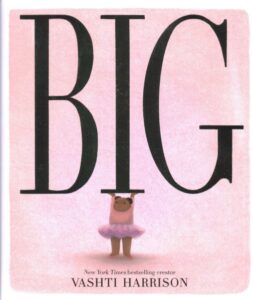
Big
By Vashti Harrison
Little, Brown and Company
$19.99
ISBN: 978-0-316-35322-9
Ages 3-6
On shelves now
When I was a kid and there was a problem with something I watched or read, half the time I ignored it and the other half I probably didn’t even notice it. And when I look at kids today, one of the reasons I’m so delighted by this new generation is that they are unafraid to call out problematic content when they see it. Still, it is also interesting to see what does and does not get their attention in our books and movies. I was discussing Fantasia with my kids the other day, talking about the original version and the instances where content had been expunged. I explained that in the original Fantasia there had been some incredibly racist content in the centaur sequence. “What about the mushrooms?” my daughter was quick to ask. She meant the Asian-stereotyped mushrooms in the Nutcracker section and I realized that she was absolutely right. Somehow that racism had been deemed okay and remained intact, but the other racism wasn’t. I was grateful to her for noticing that, but later it occurred to me what none of us had also pointed out: the fat hippo sequence a little later. The weight of the large hippos is played entirely for laughs, the idea of them dancing in tutus seen as inherently amusing, particularly when they crush the crocodiles with their weight. My daughter, kid though she is, hadn’t remembered that sequence as also typifying certain people as a certain way and that says something to me. We’ve got kids going around with an increasing awareness on a lot of things, but when it comes to weight, that’s one issue that almost never comes up for them. They’ll sit through entire curriculums in school about the history of racism in America, but no one talks about anti-fat bias. Literally no one. And when it shows up in our children’s books, where does it end up? In the middle grade fiction for 9-12 year-olds, of course. Mind you, by that point they’ve been so inculcated in anti-fat bias that you might begin to wonder why we’ve never had a really excellent picture book address this issue before. There are plenty of paltry picture books filled to the brim with didacticism, sure, but until I read Big by Vashti Harrison I really had never seen one that tackled the issue head on with style, skill, and creativity. More of this please!
“Once there was a girl with a big laugh and a big heart and very big dreams.” She was happy with herself, but around second grade we see this begin to change. One day, she and the other kids are playing on the swings for younger children and she gets stuck. After suffering through all kinds of insults and getting yelled at by adults, things change. “She began to feel not herself, out of place, exposed, judged, yet invisible.” It all culminates in a sequence where she grows larger on the pages, filling them entirely. Eventually, she’s able to cry out the awful words and then separate the good from bad. The good, she keeps. The bad, she hands off. And when folks offer to help her change, she politely declines. “…she was just a girl. And she was good.”
ADVERTISEMENT
ADVERTISEMENT
Daunting. That’s the first word that comes to mind when I think about trying to deal with how fat people have typically been portrayed in the world of children’s picture books. I’m not even talking about the novels at this point (Roald Dahl and J.K. Rowling would earn themselves an entire thesis on the subject, after all). Let’s just stop a second and try to think about fat adults in picture books. Who comes immediately to mind? Anyone? And if you can think of anyone, are they nice or mean? Now think of the most positive fat character in the whole of children’s literature who’s a kid. If you’re struggling then you see the issue. Children’s books were created at the start as a way of inculcating morality in kids. For the most part, and for many of them, including this book, that hasn’t changed. The problem is that sometimes we don’t realize that on our way to teaching one lesson we’ve inadvertently taught a terrible one as well. A book of anti-racism or economic disparity can throw in a couple fat jokes or insults and few will blink. So imagine being one of the few books to face that head on. Like I say. Daunting.
Before I get any more into this, though, can we stop for a moment and take into account what Big doesn’t do? First off, it doesn’t make the insult of the main character the book’s title (you’d be amazed how often that happens in picture books). Second, it doesn’t start the main character off by feeling bad about herself. Many is the book where the protagonist begins the story by feeling awful from page one onward. Here, our heroine has had a loving and supportive family and feels great about herself until a veritable mosquito swarm of microaggressions start to bring her down. Finally, what else doesn’t it do? I call this the RRNR situation (Rudolph the Red-Nosed Reindeer). In a lot of picture books the main character is an outsider until the moment whatever it is that makes them different saves the day for the mean people. Then, out of some perverted sense of obligation (I guess?) they decide to accept that person. Here, there is a climactic moment but it’s internal and entirely for the main character herself.
I also appreciated how real the ending was on this book. As I’ve mentioned before, loads of picture books don’t deal realistically with how people act when someone is unlike them. Scads of them end with everyone having had their hearts and minds changed by the final page. It sort of sets up a false set of expectations for child readers. Here, our heroine stands up for herself and when she confronts the people who hurt her, a lot of them make excuses for their actions (“It’s just a joke,” “It’s not that serious,” “You’re too sensitive”) or offer some not-apology (“I didn’t mean to hurt you…”). But even more insidious is the person seen only has a hand who reaches out in a friendly way and says, “I can help you change if you want …?” Notice that Ms. Harrison has systematically made sure that only her hero is visible on that last two-page spread. At the moment, there’s no one else there. Hopefully someday someone will join her, but for now she needs that separation. It’s a little psychological break from the rest of the book, and indicative of a lot of how the author/artist uses visual design to back up her story.
When you think of a book character pressing against the confines of a space, what immediately comes to mind? If you’re like me, that would have to be Alice from Alice’s Adventures in Wonderland. At once point Alice bites into a mushroom and grows huge in the White Rabbit’s home. John Tenniel would depict Alice grumpy, propped on one elbow, pressed against the walls. Alice’s confines are uncomfortable and unpleasant, all the more so because they’re accidental and self-inflicted. When Vashti Harrison has her heroine grow and grow in this book, there are echoes of Alice, but for almost opposite reasons. Alice grew because of her own actions. Here, our heroine takes up several two-page spreads because of how others have made her feel. Harrison takes the chance of making several of these sequences wordless, which was a smart move on her part (and a smarter move on the part of her publisher, since too often publishing companies get nervous when words disappear in books for kids). The answer to her situation comes in the form of crying out the painful words that have earlier been imprinted on her, and again we get an echo of Alice, filling a room with her tears. But instead of drowning in her own misery ala Alice, this girl is able to look down at the words and make out good ones as well. Then she literally pushes the gatefolds of the book wide, turning the image into a four-page spread, which again I’ve never really seen a character in a picture book do before (and if you think publishers get nervous about wordless sequences, how do you think they feel about gatefolds?). Consistently this book’s design works in service to the story, rendering what could have been didactic instead expansive and creative.
ADVERTISEMENT
ADVERTISEMENT
So what does this book hope to do? Whenever you have a marginalized community, the earliest picture books that come out are usually going to be about the problems that they face, either in a contemporary setting or a historical one. Finding a main character who is fat in a picture book and the book isn’t about their size happens from time to time, but is still relatively rare. It’s possible that we need books like Big to come out first, and then pave the way for a more inclusive set of characters. In the meantime, the reader is very much placed in the main character’s shoes. That moment when she gets caught in the swings for little kids? That rang so true that it was painful. In her Author’s Note at the end, Vashti mentions that something similar happened to her when she was a kid. She also notes, and I thought that this was key, that because she was a larger child, adults thought that she was older than she was and treated her like a big kid that should know better. That happens a lot to our kids as well. Hopefully when read to kids, a book like Big can encourage a bit of empathy in its readers. It cannot exist in a vacuum, however, so we’re going to need more books with fat protagonists to help.
I’ve gotten this far into the review with no mention of race, so that’s not great. The main character of this book is Black, and historically anti-fat bias and anti-Blackness have been tightly interlinked. White people who would go out of their way to avoid discussing a child’s race often have no difficulty discussing the size of their bodies instead. In Big, our heroine faces white authority figures that continually puncture her self-image with small, needling little comments (Santa saying, “You’re a big girl, aren’t you?” really got to me). Also, the title of this book is “Big”. It is not “Fat”. That didn’t strike me as a problem. Like a lot of marginalized communities, there’s not always a consensus on terminology. So some people are very comfortable with the word “fat” while others shy away from it. Big is a picture book. It’s not here to end that discussion. It’s here to give kids a shot in the arm of empathy.
This isn’t a book where the world changes itself for our heroine. It’s not a book where everything is magically okay at the end. That’s not its point. It’s not pretending that she won’t be facing more of these problems in her future. All it can do is say that if she’s happy with herself and who she is, that’s going to go a long way. There’s an honesty here that I really admired. Now add in the fact that the art isn’t just lovely, but also evocative and creative (that gatefold is really a delight) and that the writing itself is great and you have yourself one of the best books of the year. Most excellent! One little book isn’t going to change everyone’s mind about something, but one little book is where you have to start. A superb idea, wrought large.
On shelves now.
Source: Galley sent from publisher for review.
Videos:
I don’t like to read reviews or watch videos before I write my reviews. As such, I didn’t watch this video with Vashti Harrison until just now. After doing so, I feel like she did a great job of addressing “adultification bias” in the book, since I picked up on that prior to watching this.
If you do nothing else today, watch this. Skip my review, and watch this.
Filed under: Best Books, Best Books of 2023, Reviews, Reviews 2023
About Betsy Bird
Betsy Bird is currently the Collection Development Manager of the Evanston Public Library system and a former Materials Specialist for New York Public Library. She has served on Newbery, written for Horn Book, and has done other lovely little things that she'd love to tell you about but that she's sure you'd find more interesting to hear of in person. Her opinions are her own and do not reflect those of EPL, SLJ, or any of the other acronyms you might be able to name. Follow her on Twitter: @fuseeight.
ADVERTISEMENT
ADVERTISEMENT
SLJ Blog Network
Name That LEGO Book Cover! (#53)
Exclusive: Vol. 2 of The Weirn Books Is Coming in October | News
Fighting Public School Book Bans with the Civil Rights Act
Take Five: Middle Grade Anthologies and Short Story Collections
ADVERTISEMENT

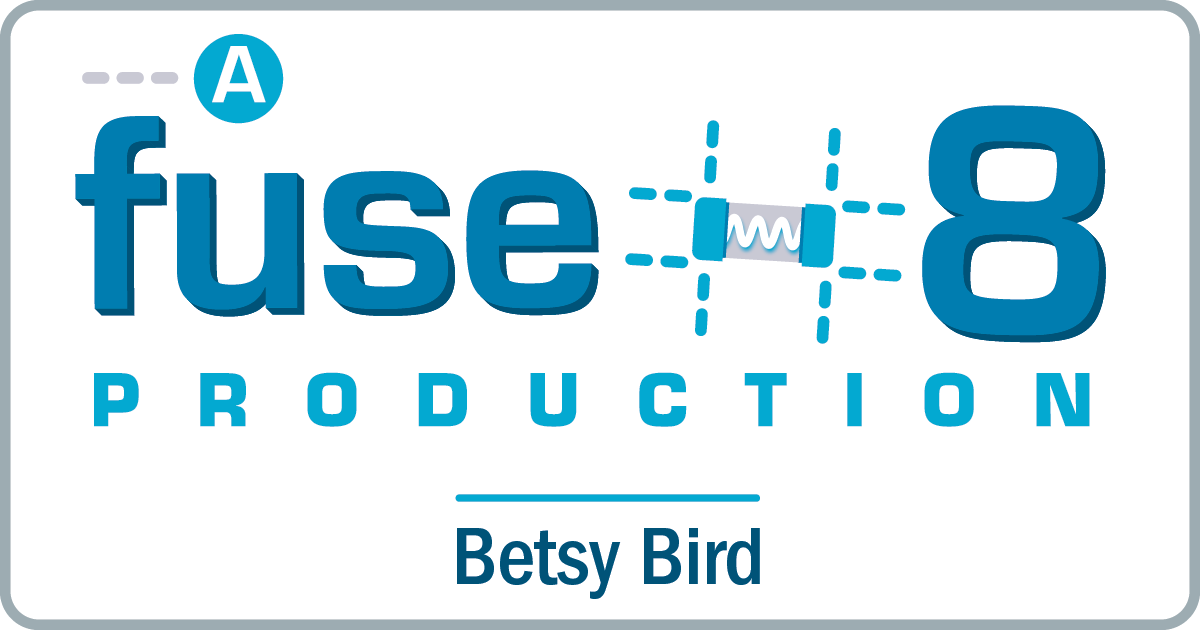

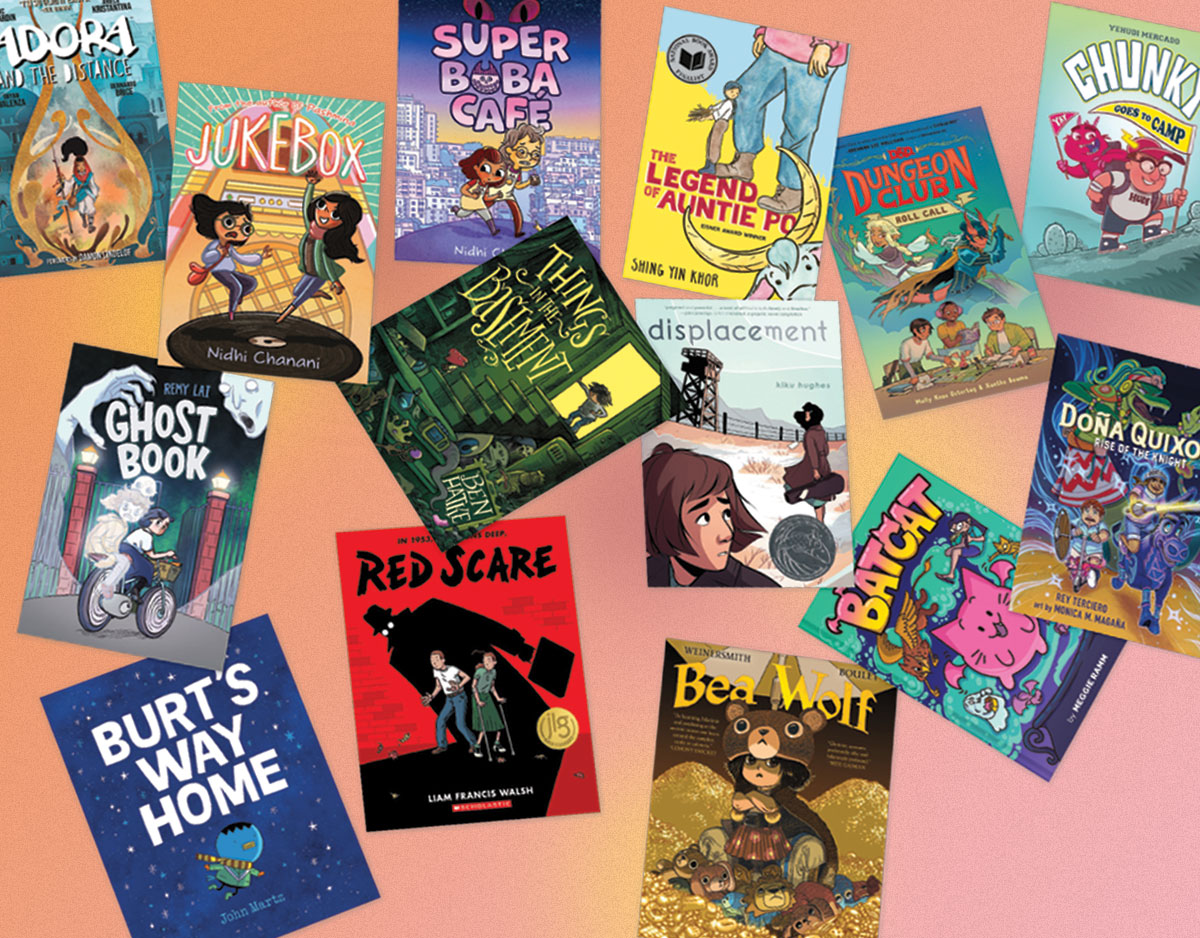
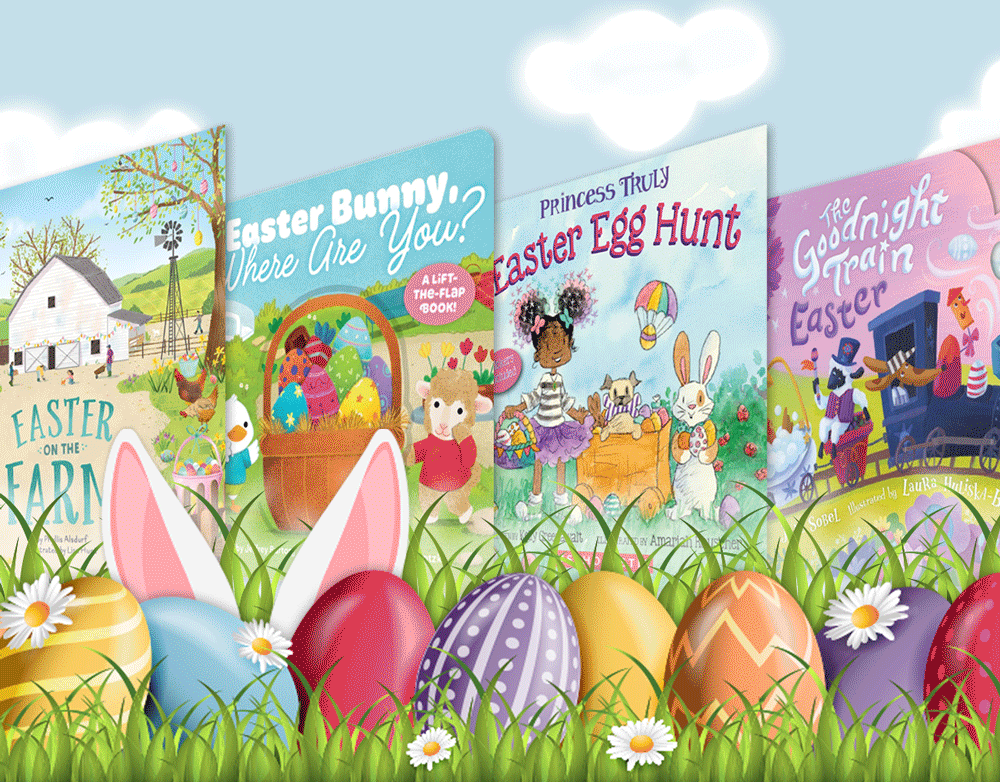
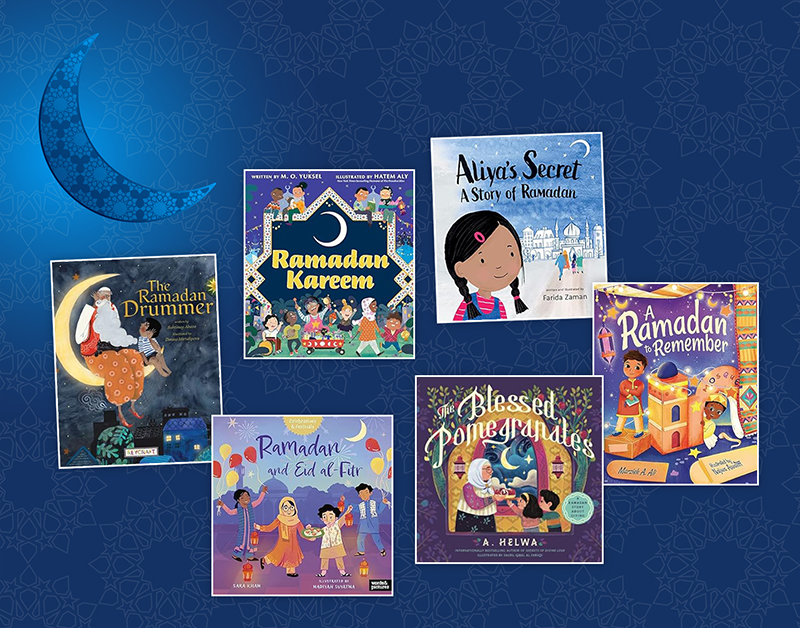
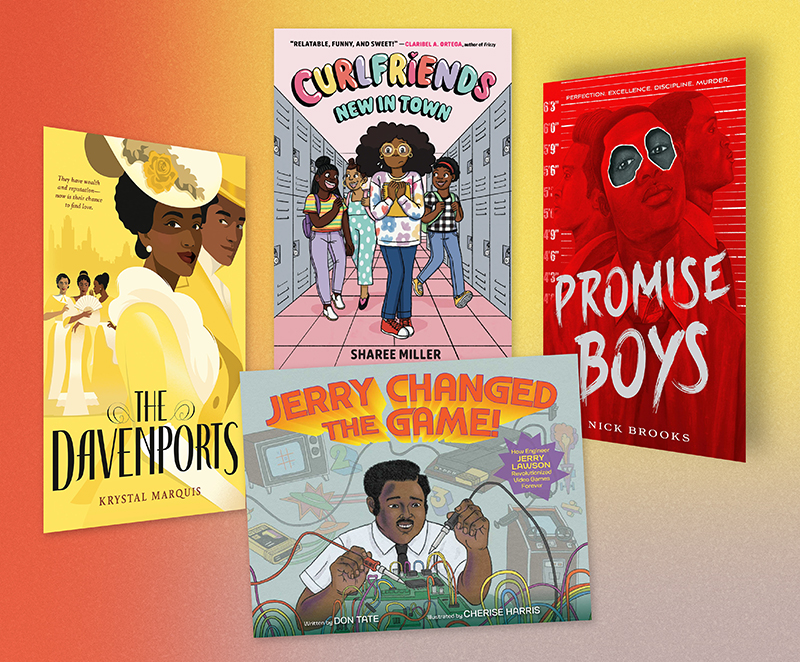
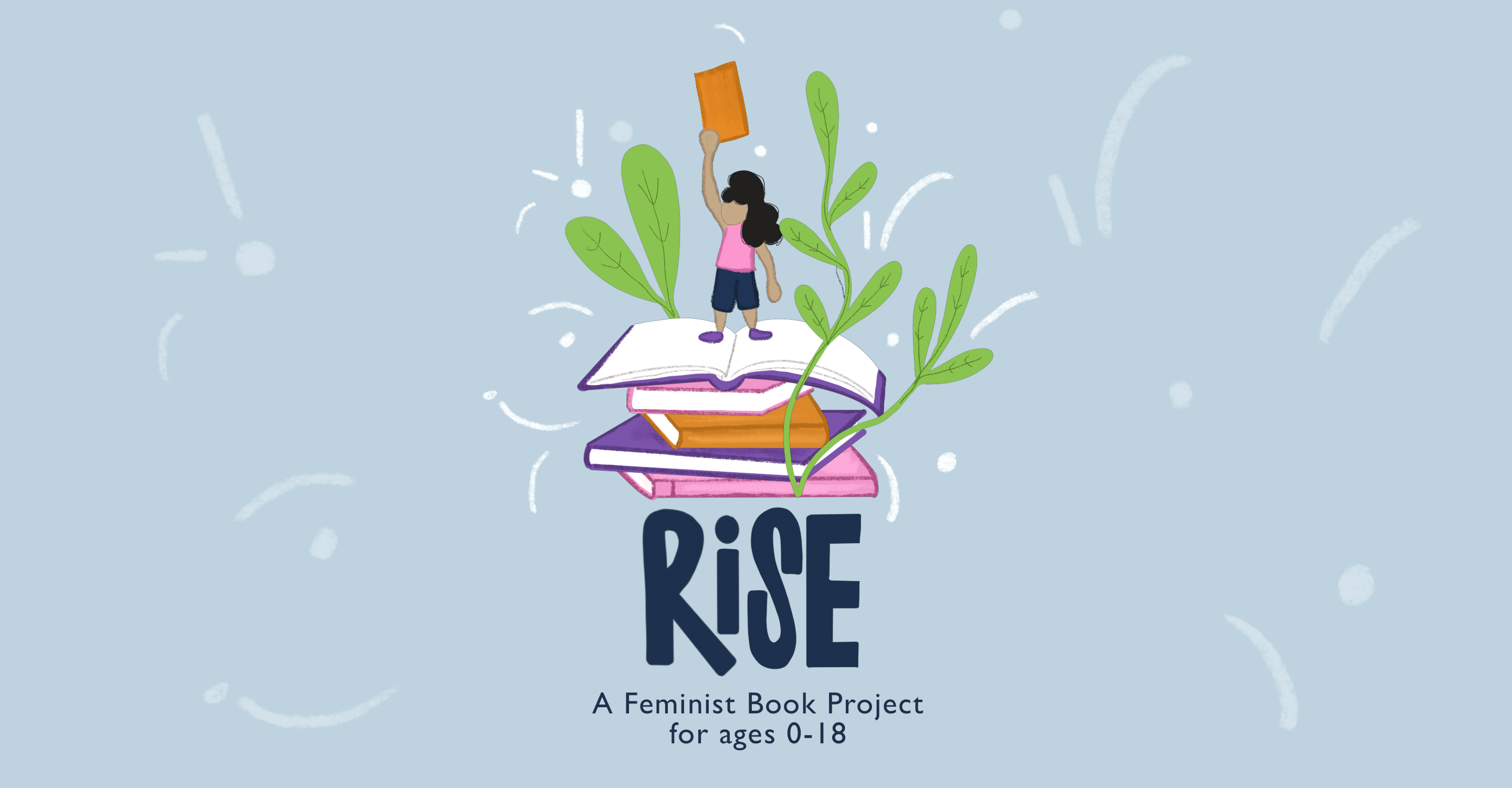
It is so easy to understand why BIG has been chosen as one of ten titles nominated for the National Book Awards for Young People’s Literature. And I haven’t yet opened the book! Again, I confess to seeing information about this book and have even been inches away from actual copies in the bookstore. However, the cover of a little girl in a tutu has not been enough to make me pay attention . . . until today.
Betsy, the book is only 60 pages (according to the Amazon information). Your review today will probably take longer to read and digest for the folks who might rush through the text and glance at the illustrations. But what a review this is . . . more like a term paper or a thesis. You discuss in depth so many pertinent issues. One I particularly enjoyed was this statement. “It’s possible that we need books like BIG to come out first, and then pave the way for a more inclusive set of characters.” Folks like you and me lack patience with the process. We want to make it “all better” yesterday because we know connection with characters and their unusual (for the reader) circumstances can lead to EMPATHY and UNDERSTANDING. Books give us an opportunity to meet, get to know, and care about TOTAL STRANGERS of foreign- to- the- reader ages, ethnicities, environments, time periods . . . I could go on and on.
FOR VASHTI HARRISON: I also want to comment on the words “something similar happened to her” (the author, Vashti) “when she was a kid.” Oh, yeah, “write what you know” is the best advice. I can say how sorry I am you had this experience and have carried the pain of memory for so many years. Additionally, having your story selected for this recognition and reviews such as Betsy’s will bring this wonderful book to the awareness of thousands of children and the adults who care for them. You do not need to win this award. You are already a “winner”. I am so grateful for Betsy’s exposure and will gift a copy to the little rural Maine public library I support . . . after having the pleasure to enter your world myself.
Now, before my comments become even longer than Betsy’s (THANK YOU, THANK YOU, THANK YOU for every word you write) I’ll sign off for today and go prepare to experience the impact of my first hurricane!
This sounds a lot thematically like “Beautifully Me” by Nabela Noor